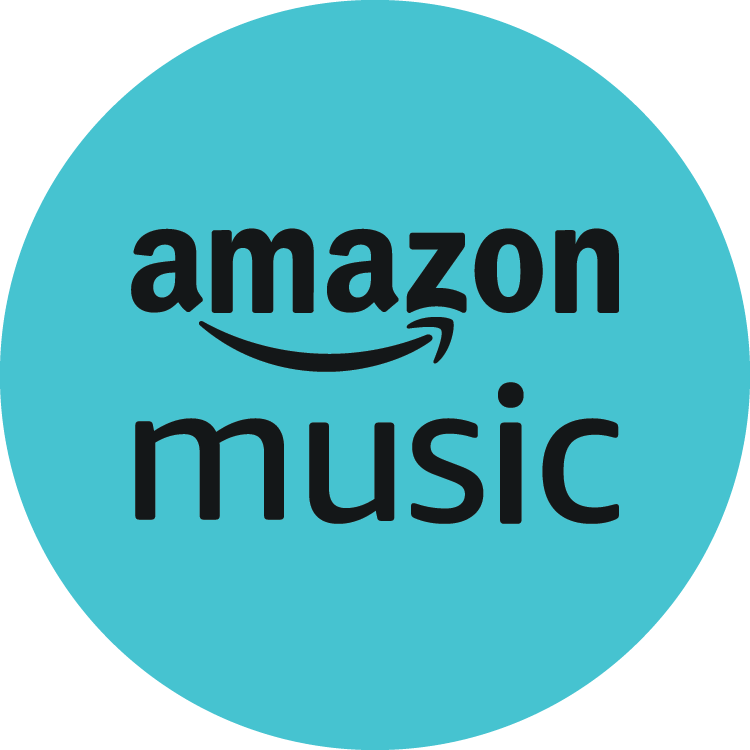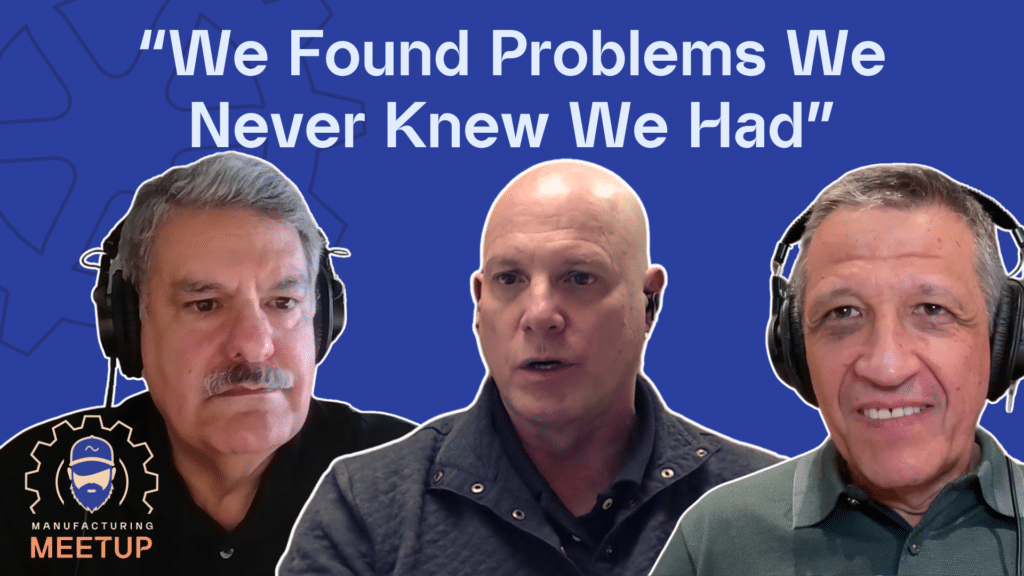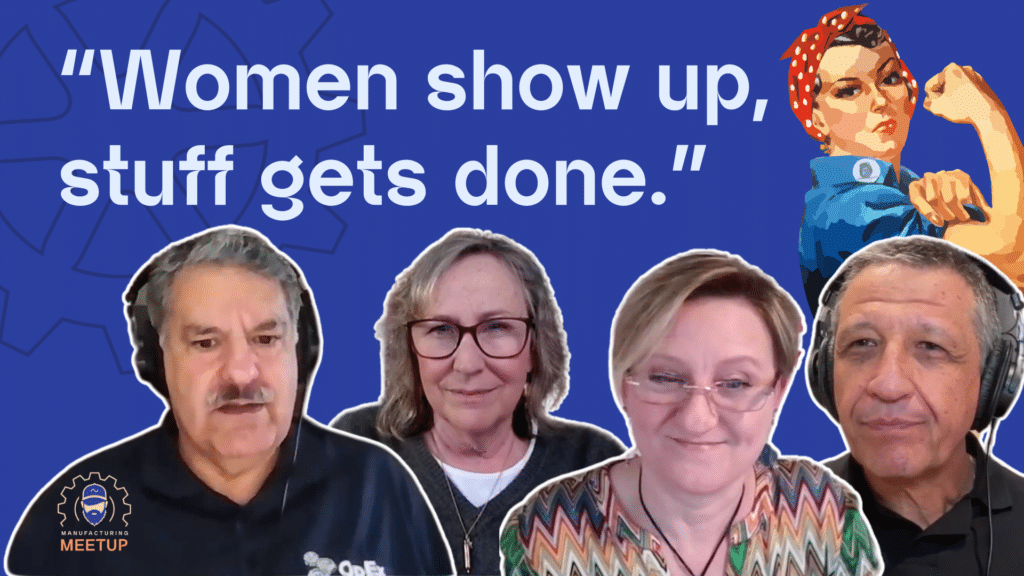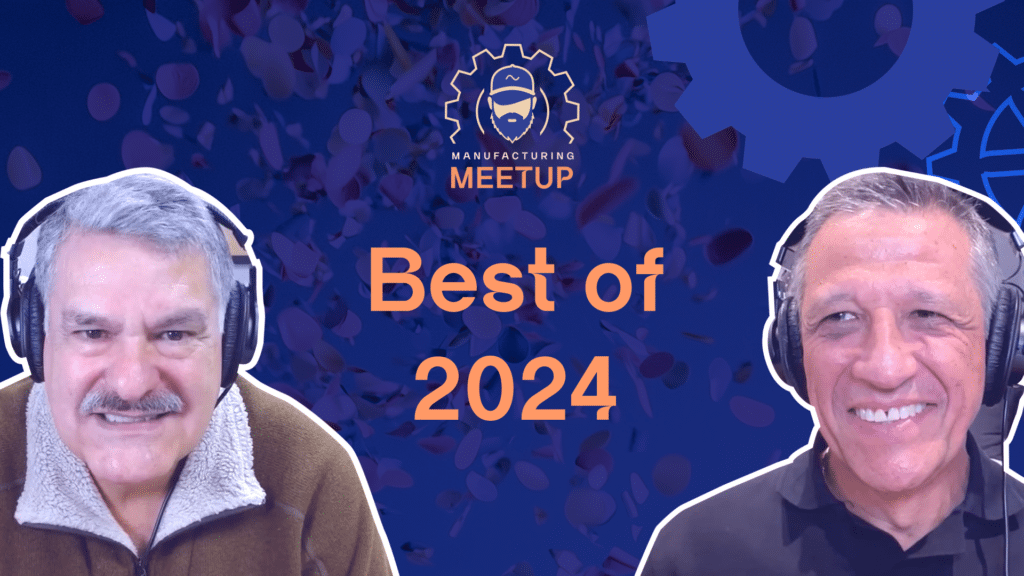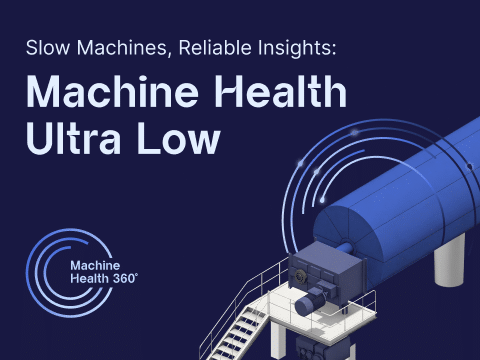AMA: The best training courses and must have tools for the shop floor
What’s the best training you’ve received in your career? Ed and Alvaro share their favorite courses – plus the real life training they got riding along with delivery drivers.
They also cover the two “must have” tools workers wants on the shop floor. Safety equipment/gear tops the list …it’s all about coming home with 10 fingers and 10 toes.
To keep the conversation going:
Email us: mmu@augury.com
Find us on The Endpoint: endpoint.augury.com
Full Transcript
Ed Ballina
Hi, I’m Ed Ballina
Alvaro Cuba
Hello, Alvaro Cuba here.
Ed Ballina
So Alvaro, we always have lots to talk about and we always have fun conversations at the beginning of this. I think after going through our first Ask Me Any Questions in the AMA, we wanted to just talk about these questions, right? We’re getting these great questions for you, but we want to encourage you to submit more. We’ve got probably combined, you know, 70 years worth of manufacturing experience, right? There’s a lot we’ve seen and we’d like to help in any way we can. Alvaro Cuba, what do you think?
Alvaro Cuba
Yeah. Yeah. This podcast and this meetup is for all of us. So it’s not about what Ed and I would like to talk about. It’s much more reachful if we can have a dialogue, if you can ask the questions. And that way we all can grow, learn and have fun together.
Ed Ballina
And by the way, we’ll be learning from you as well. So we’re really curious to see what are the topics that are really pain points for you now, or you’d like to engage with us and the rest of the Meet Up podcast group, right?
Alvaro Cuba
Great point. Not only questions or interruptions, but not only questions, comments, ideas or experiences. And we’ll relate your experiences in the podcast.
Ed Ballina
Agreed. That’s what it’s all about. So with that, welcome to the Manufacturing Meetup Podcast, the show where we kick back and we talk about our experiences on the shop floor, whether it’s people experiences, efficiencies, etc. There’s a lot of rich fodder in the manufacturing world and lots of experiences to be shared and learned. So let’s get started.
Alvaro Cuba
Okay, let’s get started then. In this episode, we have two questions. One was, “What was the best training that you had during your career?” And the second question was, or is, “What are the two most important tools that you should bring into the shop floor?” So starting with the first, let me give it a go Ed.
Lots of good training in my career, but one stood out. And this was when I was coming from Latin America to the U.S. with Kraft. And I had to learn the new culture. So they organized for me a 360. And this 360 was in a couple of weeks, the opportunity to meet, not only to meet, but to experience a lot of the end-to-end supply chain plus stakeholders. What I mean by that. So I went to visit some of the most important suppliers and talk to them and ask them what they were thinking. I went to a couple of plants and saw what they were doing and how they were interacting.
Then I went into logistics. We distribute products directly. So five in the morning, go to the truck, help to load the truck, go to the store, unload, then go with the merchandisers, help put the product on the shelves, go to the customers, talk to the customers, ask what they think, how they feel about the service. And then internally, with peers. I had a very fun visit to the stock exchange because yeah, our stock is there. So it’s important whatever we do, it has an impact. I had a discussion with one of the directors. I went to the headquarters. So it was a 360 that allowed me to understand the end-to-end supply chain first, the peers and stakeholders.
And the different parts, where were our strengths, opportunities, and in all of them, I was asking how you think in this new role I can contribute or not. So when I finally sit after two weeks on that, I felt that I had a lot learned and I was ready to go.
Ed Ballina
That’s, I was going to ask you how long you did this? Cause I mean, that’s, that’s a lot of heavy lifting, right? No pun intended. The Pepsi side of that or equivalent of that is what we call route rides, right? And that’s where you jump on a delivery truck with either route salesman or a bulk delivery person and you help them, right? Deliver the product and all that. So.
Alvaro Cuba
How about you?
Ed Ballina
The sales folks always liked it because it was extra help on the truck. And somehow I always wind up carrying more boxes than the driver. And I was like, OK, I get it, right? But this is the way it is.
Alvaro Cuba
You are the rookie, so you do the heavy lifting.
Ed Ballina
Absolutely, he found himself a sherpa, you know? So you go out there and do what you, it was always fun. And you know, engaging with the frontline, right? I mean, we engage with the frontline in our plants all the time, right? Most of the facilities that I ran, not only were we manufacturing facilities, we’re also distribution centers. So we loaded trucks that got delivered the next day to the store. That’s the direct store delivery model. And you’d always get that kind of interaction with the loaders.
I mean with the with the drivers except when they call and complain about misloads or out of stocks. But it was really great to see what these folks go through. And I went on a route ride in the middle of Philadelphia. Oh my goodness. All those one way streets that go the wrong way. The traffic, right? How do you not double park. Oh. You got to hit your your times. So.
Alvaro Cuba
Yes, the timings that you need to do the perfect timing.
Ed Ballina
It really sounds like a fantastic experience. that’s awesome.
Alvaro Cuba
It was, it was. And besides the logistics that manufacturing, customer suppliers, headquarters, the stock exchange and all that. So it was quite fun. How about you? What was your most, your best, the best training in your career?
Ed Ballina
That’s very cool. That’s awesome.
So like you, I’ve had a lot of different training courses over my career and it was hard to pick just one. But if I had to, I would tell the most impactful and the one that I’ve used since I got the training, so probably for the last 40 years, is analytical troubleshooting. It is a course taught by a company by the name of Kepner Tregoe Long story short, there’s the last names of two authors of a book, that essentially went out and tried to figure out how, I think they picked up like the hundred best troubleshooters across many industries. And they set out to figure out what made them great troubleshooters. And based on that, they came up with a program called Analytical Troubleshooting that is a little painstaking and time consuming, but it’s a very logical, rational approach to solving problems. So as you know, my first, my first company, first out of school, was Procter & Gamble, and they did an amazing job of teaching folks. I joined the Mahoopany, Pennsylvania plant in ’82, they had a dedicated training center where you could sign up for courses. And ATS has really been the most impactful in my career without a doubt. As an engineer appeals to me because it’s a very structured way of thinking and a very logical, rational approach to problem solving that really yields great results.
Another component of that, that you get when you attend Analytical Troubleshooting training is potential problem analysis. And let me tell you, that has saved my bacon so many times, right? When you’re installing a new piece of equipment, right? And you ask people to sit down and help you develop potential problem analysis. Like what could go wrong? How do we prevent it? And if it does happen, how do we mitigate it? And my goodness, simple things like bumping all every motor for rotation.
Right? Before you need to start, you don’t want to be, you know, that person that starts up a line and now has to immediately shut down because they realize the conveyor is running backwards. Right. And it’s very simple to check. So Analytical Troubleshooting. In fact, my two GMs will be attending that course sometime this year. It’s, you know, as a, as a new enterprise, it’s not like we have a ton of training dollars, but I feel that one is so important that I’m going to send both of my GMs to that.
Alvaro Cuba
I love your pick. It certainly, and it not only applies to manufacturing, or, it applies to everyday life. If it becomes very efficient, it’s safe and it’s safe a lot of time by the way. So yeah, I love it.
Ed Ballina
It does. I believe it or not, every time I switched companies, right? So I went from P&G to Scott Paper, Scott Paper to Pepsi. I also used another tool they teach you there, which is called decision analysis. And as corny as it sounds, my wife and I actually sat down and we brainstormed like the 28 criteria or things that were important to us, like geographic location and all that.
And then we weighed each of the options, stay here, grow my career here, or move on to your next role. And it’s a numerical exercise. And I use that for every career move that I made. So.
Alvaro Cuba
Well, imagine my case with nine moves, eight different countries. So not only for the decision, but for the move itself. A lot of potential problems, yes. Okay, thank you for sharing Ed. And I think it was a great one. So moving to the second question is two most important tools that you would bring to the shop floor. The first for me is your safety gear. There is nothing that can replace that. So never ever hit the shop floor if you don’t have the right safety gear. Not only the safety gear, but the right one. Not every different facility, depending on the hazards and all that, they have some specifics.
And you should wear it. Someone should check on you and you go to the floor. I always encourage everyone in the floor. And I was very thankful when I was going into a plant and someone was coming and say, hey, your hearing thing is off or yeah, no, you need to put the hair under the…the net or your gloves, it’s that knot or this. So I had a boss in my Bunge times very early in my career that used to say, I come with 10 of these and 10 of those, I want to go back home with the 20 complete. So please do it, yes.
Ed Ballina
I hear you. Leave no body parts behind.
Alvaro Cuba
Please do it like that. And always helps. And it also brings culture, because if I am disciplined to do that, if I have the discipline to look at my peer to my right and my left and make sure that they are using the safety equipment the right way, then right there is cleanness, is efficiency, is camaraderie, is caring about the others. That goes into whatever you do, those principles apply.
Ed Ballina
Yeah, they follow. And safety is the one thing that I think everybody can agree upon. Even in locations where we’ve had kind of a challenged labor climate, right? If it was organized labor and maybe the relationships weren’t great. Usually the first place you went to to start building jointness was safety. Right. And trust, right? It was like, hey, you know what? This is good for all of us. This is something we can all agree upon. So.
Alvaro Cuba
And trust. And trust.
Ed Ballina
Let’s start working together to make this a safer workplace. And from there, right, you can start moving on to, hey, how do we jointly help run this enterprise? Because your employees need a job and we need to have this work done. It really works out well. But as you were talking about safety, one of the most impactful things that I, at least for me, that I experienced was when, in one of the companies I worked for, we decided to update the lockout/tagout tags, right? Which usually they’ll have the person’s name or whatever, right? And the date that was put on. Well, we actually used employee pictures. So it was a picture of an employee and some of them said things like, hey, I want to return to my family the way I came in. You know, your point about, you know, your fingers and your toes. Man, that puts a face on what you’re doing.
Alvaro Cuba
The best safety campaign I ever seen is the one that you are saying with the logo that I was saying, “I work safe for…” And below, it was the picture of the son, the wife, the brothers, the mother, “I work safe for.” Fantastic.
And the second, my second tool is a camera. Sometimes I think in a camera and I think, oh, this outdated. Now with all this technology, now you have videos and Google lenses and slow motion cameras and all that. But the simple thing is a picture is worth a thousand words and not only to show you to the next one, but if you see it, you understand it much better than just by words. So those two are my top two. Which ones are yours?
Ed Ballina
Well, I love the camera one. We actually talked about it during our first podcast, as I mentioned, when I do my deep dives on these lines, I use this camera in slow-mo to capture, you know, it’s really some amazing footage. I can talk to somebody about the fact that their snift rail, and not to get too technical, but essentially it’s what allows a bottle or can to come to atmospheric pressure after it’s been pressurized.
I can say, hey, your snift rail is leaking. It’s, your snifting way too fast. You’re creating agitation. But when I take a video that, right, and I show it to folks, there’s no conversation, right? It’s immediate. So and of course, safety how you know that that has to be number one. But for me, eyes and a flashlight. OK.
Um, so yep, vibration analysis, infrared thermography, ultrasonic testing, oil analysis. They’re all great. And I’m not saying that you don’t want to do all of that. Right. However, sometimes, um, we don’t have to get too fancy, right? We have some amazing sensors that come with the body, right? Your eyes, right? Your hearing, you know, your sense of smell, even…
Ed Ballina
Even the sixth sense. You and I were talking in the previous podcast about when you walk into a plant that is in trouble and is, I mean, you get a feeling, okay? And that is, it’s listen to it because it’s telling you something. But a flashlight, right? We’re trying to peer into equipment. You don’t want to shut equipment down necessarily to inspect, a flashlight and they’re so cheap and they’re so powerful these days. That I would encourage I mean, some of us certainly use the flashlight on our phones. That’s not powerful enough and not focused enough. Get yourself for 100 bucks, you can get an amazing rechargeable flashlight with like 1500 lumens type of illumination. And you can see a lot of stuff. By the way, you can also use it as a light when you’re shooting your video, right?
Ed Ballina
Because sometimes it’s very dark and your phone won’t have the reach, but if you put a nice heavy light on it, you’ll be able to get much more detail. Yeah, I think it’s great.
Alvaro Cuba
Yeah, I think it’s great. And everything you do in a line starts with inspect, clean, and lubricate. In the inspect, high sensors and a flashlight, and it is the starting of everything. So great picks.
Ed Ballina
Yeah, yeah, they do. In terms of key takeaways, so we’ve talked to you about the two key questions that you had. So key messages, capability development, right? Right from the beginning, take every chance to learn new skills, right? And new processes. I’m a lifelong learner.
I want to learn everything I can every day. It just makes you a better rounded person. So capability development, for your tools, use your senses. They’re amazingly accurate. Believe it or not, a human hand, and I’m not advocating that we stick their hands in equipment, but a hand can stay on a surface up to about 145 to 155 degrees Fahrenheit. Anything above that, your hand will feel like you’re burning, right?
If you walk by a motor, right? And you put your hand on that motor, obviously safely, and you can’t keep your hand on it for any more than a second or two or a gearbox, that’s a problem. That should not, it should stop because something is, is, is awry. So, um, but to leave you with the last point, be safe, right? Be safe. We want you to come back to your friends and families and significant others with the same body parts that you walked in the plant with.
Right? Nothing we do is worth getting hurt for. Right? That was a slogan at one of my employees, but it is, it holds true. So, with that, I think we’re ready to wrap up. so thanks for tuning in today. this is our ask me anything episodes, but they’re only as good as the questions that you have. Okay. we really want to know what are those pain points? So, you know, what are the things you’d like to hear us talk about and then comment, let me know.
Alvaro Cuba
Absolutely.
Ed Ballina
Listen to the podcast, give us your opinions. You know, at the beginning of all this, Alvaro Cuba and I always promised you that we were going to have answers. We just didn’t tell you that they’re all going to be the right answers. Okay. So please let us know. We’ll have something to say. That’s a fact. So.
Alvaro Cuba
So, well, buddies, let’s wrap up today’s episode. Thank you so much for joining us on the Manufacturing Meet Up. And we hope that you continue to join us and send us your questions, send us your stories, and everything is going to be great to meet you at this meetup.
Ed Ballina
Perfect. So email us at mmu@augury.com, right? Or you can find us on the Endpoint. That’s the free online community for manufacturing pros like most of you. And you can find that at Endpoint.augury.com And we’ll throw those addresses in the show notes as well. So looking forward to our next meetup. Take care, manufacturing buddies.
Alvaro Cuba
And if you enjoy this, please like us on the YouTube and/or send us a review in iTunes and please share the Meet Up podcasts. Great seeing you guys. Great, Ed, bye.
Meet Our Hosts

Alvaro Cuba
Alvaro Cuba has more than 35 years of experience in a variety of leadership roles in operations and supply chain as well as tenure in commercial and general management for the consumer products goods, textile, automotive, electronics and internet industries. His professional career has taken him to more than 70 countries, enabling him to bring a global business view to any conversation. Today, Alvaro is a strategic business consultant and advisor in operations and supply chain, helping advance start-ups in the AI and advanced manufacturing space.

Ed Ballina
Ed Ballina was formerly the VP of Manufacturing and Warehousing at PepsiCo, with 36 years of experience in manufacturing and reliability across three CPG Fortune 50 companies in the beverage and paper industries. He previously led a team focused on improving equipment RE/TE performance and reducing maintenance costs while improving field capability. Recently, Ed started his own supply chain consulting practice focusing on Supply Chain operational consulting and equipment rebuild services for the beverage industry.
